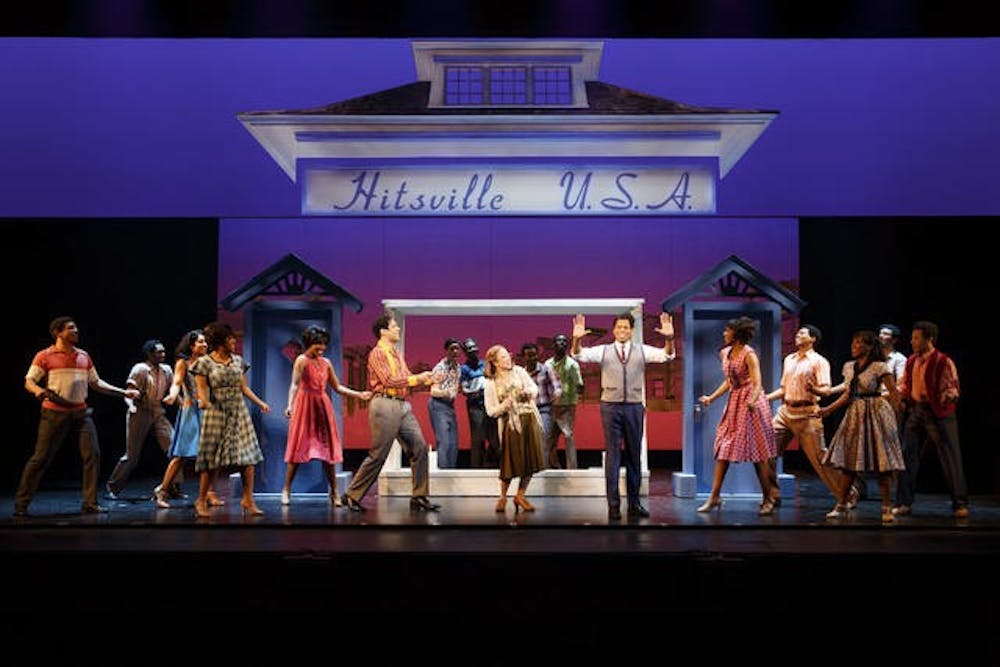Seldom does a record label carry the cultural significance and reputation that the legendary Motown Records does. The Broadway production “Motown: The Musical” tells the story of this legendary record label, it’s origins, it’s struggles, it’s discoveries and the careers it helped to forge.
The musical focuses on the founder of the label, Berry Gordy (played by Chester Gregory) and how his dreams of making people happy helped forge his path to stardom. It follows his beginnings as a Detroit factory worker and part-time songwriter, through his founding of “Hitsville USA,” the predecessor to Motown Records, and his journey to make his and others dreams come true of being musicians and super stars.
What was immediately apparent, even before the curtain raised, was the iconography. The curtain displayed the Motown Records logo, a large, golden art deco “M” that, while minimal, seemed to arouse recognition and excitement in the audience. A refreshing element to the production was the presence of a live conducted orchestra that accompanied the actors. While an orchestra is not an uncommon trait for musicals, what differed was the introduction of the conductor, which I’ve only really encountered during symphonies and other classical music events.
With the introduction of the conductor, the show began at full speed with a number by the Temptations and the Four Tops that set the tone for the beginning of the first act. The curtain raised to reveal a dazzling set of red and blue neon lights with the actors executing songs perfectly while performing choreography true to that of early Motown acts. Nothing over the top, but it captured the nostalgia of early Motown.
Broadway shows are known for complex choreography and masterful singing. However, Motown eschewed the complex choreography in favor of what the musical was really about — the music itself. The show featured cast members portraying the most recognizable artists that got their start on Motown Records, everyone from Smokey Robinson and Diana Ross to The Jackson 5 and Stevie Wonder. The production left no stone unturned with its musical numbers, with all the songs being originally written by Gordy and performed by the various artists he wrote them for.
The score being completely composed of Gordy’s music gave character to the production and to Gordy’s belief that songs should tell a story, which they definitely did. The songs themselves were able to tell the story of Motown and Gordy year by year.
The only fault of the production was the audience involvement. Audience involvement creates a connection between the actors and the audience to establish rapport or add an interactive element to the production. While done with the best of intentions, the audience’s interactions weren’t as enthusiastic as the actors may have hoped they’d be.
Regardless, the acting, singing and dancing in the production were done with the highest respect for the source material. No songs were needlessly altered, and no dance numbers overshadowed the songs. The pacing of the musical was consistent and well told, with no parts dragging or being rushed.
Motown is a musical worth seeing. It will not only leave you with a newfound appreciation for Motown, but with new knowledge of its history, its struggles and its legacy. Motown will be playing at Popejoy from March 2-5.
Fin Martinez is the culture editor for the Daily Lobo. He can be reached at culture@dailylobo.com or on Twitter @FinMartinez.
Get content from The Daily Lobo delivered to your inbox






